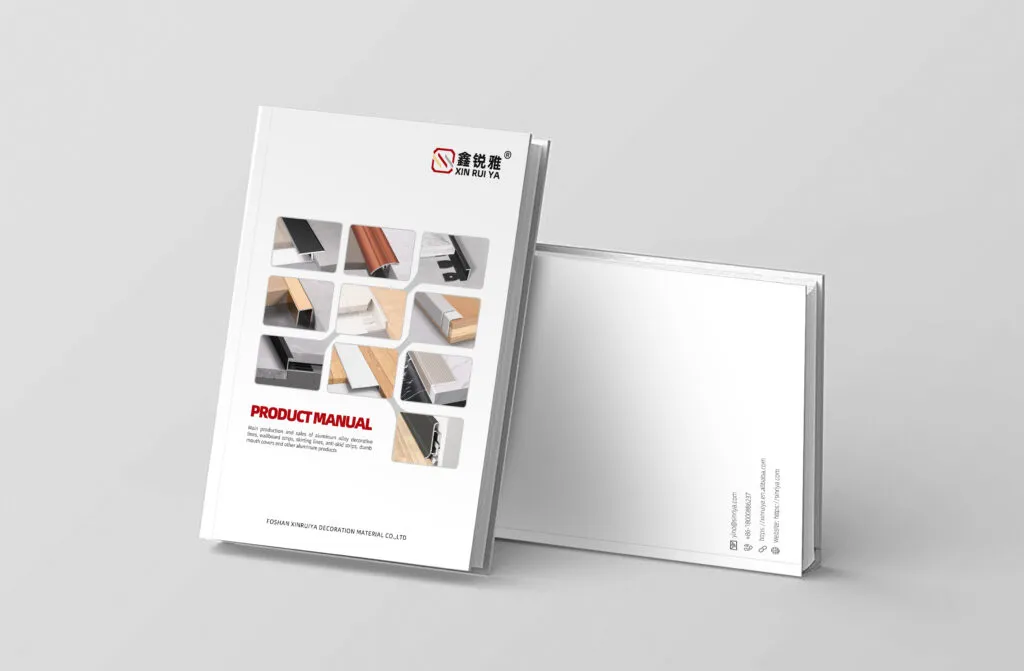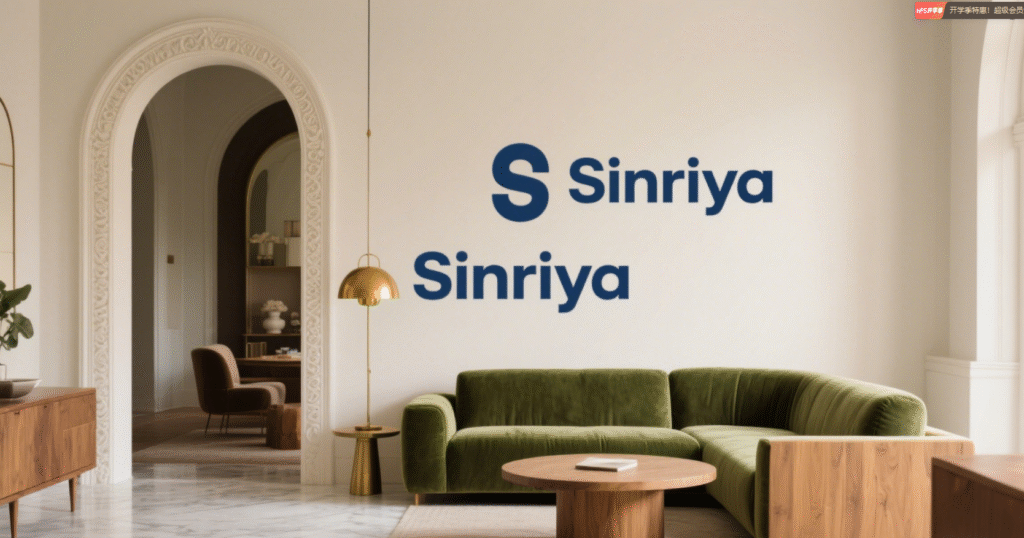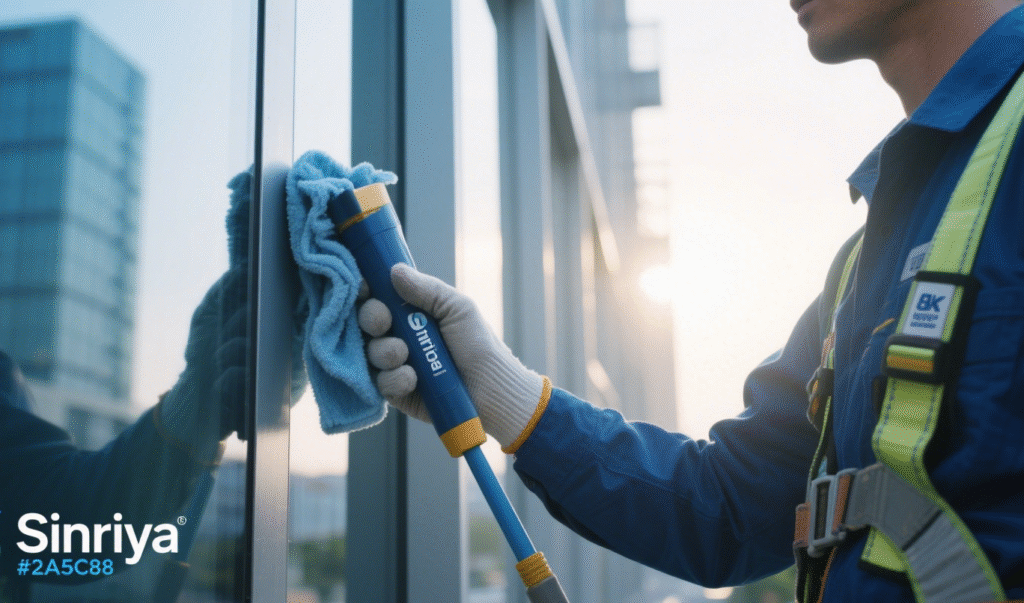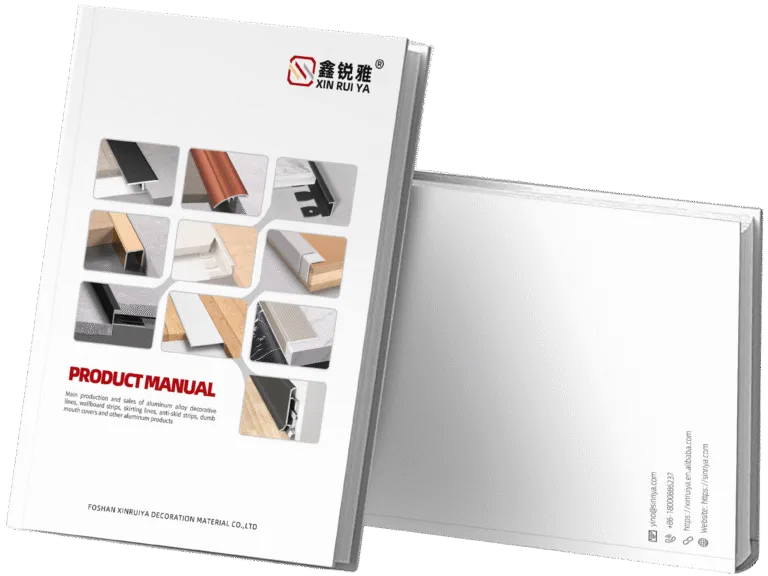Hello there! I’m Leo Liang, your guide to transforming spaces with the power of modern materials. As a proud member of the Sinriya Decoration Company team in Foshan, China, I live and breathe home building materials, especially the incredible versatility of aluminum. What started as a personal passion for creating beautiful, functional spaces has evolved into my mission: sharing expert insights through sinriya.com, our podcasts, and across all major social media platforms. I believe that understanding the right materials is the first step to truly remarkable design, and that’s why I’m here to illuminate the world of aluminum decorative trims – a true game-changer for B2B clients seeking excellence.

Why Aluminum is the Unsung Hero of Modern Interiors
When I say aluminum in structural construction and interior design, I get a glimpse of recognition. It is ubiquitous, yet its actual capabilities go largely unnoticed. Technically speaking, aluminum boasts a long list of attributes that make it an ideal candidate for architectural and structural design. Its light plus high strength makes it the best. Imagine constructing without the heaviness of steel but with equal strength of structure; that is aluminum’s strength. Moreover, aluminum itself is corrosion-resistant to the point of naturally forming a protective oxide layer that guards it from the outside environment, protecting it even under harsh conditions like kitchens and bathrooms. That durability equates to your designs lasting longer, resisting rust, rot, and even the damaging effect of UV light.
Beyond its strength, aluminum carries immense visual appeal. Its clean, contemporary finish is the perfect foil for contemporary design, and it can be easily extruded into complex profiles and shapes with maximum design freedom. Ranging from a minimalist aesthetic to a bold architectural statement, aluminum can be finished in any number of ways, including anodizing and powder coating, to complement any color scheme or texture. From a functional aspect, aluminum is low maintenance and simple to clean, resistant to staining and requiring less maintenance. Indeed, thermal performance can even contribute to energy efficiency, especially with the application of thermal breaks in framing systems, which reduce the transfer of heat. This combination of toughness, attractiveness, and functionality makes aluminum an actual unsung hero for contemporary interiors.

What Type of Aluminum Trims Can Transform Your Design
At Sinriya, we believe every project is unique, and therefore our line of products is made to be extremely versatile. We have a wide lineup of aluminum profiles, each one of which is designed for a specific application, without any compromise in quality and appearance. Our core products include an extensive line of metal trims that can be used for protection as well as decoration.
Take metal tile trims, for instance. They’re vital for protecting the fragile edges of the tiles from chipping and damage, especially on heavy-traffic floors. But not only are they utilitarian; they add a clean, stylish appearance and can be used to make beautiful decorative lines, ranging from T-shaped to U-shaped, L-shaped, or with a classic round edge. We have over 300 tile trim models alone, with thousands of model molds, so you’ll find the perfect match no matter the tile thickness. Standard trim thicknesses may range from 6mm, 8mm, 10mm, 12mm, 15mm, 18mm, to 22.5mm, to accommodate varying tile thickness and adhesive beds, while standard lengths are typically 2.4m, 2.5m, or 2.7m.
Besides tile trims, our product offering encompasses other important decorative and protective elements. Aluminum skirting boards are a resilient and stylish interface between floors and walls, protecting walls against knocks and conferring an elegant finish. Our carpet trims offer safe and smooth transitions between flooring types, minimizing tripping hazards. For open wall corners, aluminum wall corner guards give solid protection from impact damage while also beautifying the room at the same time. In addition, we have LED aluminum profiles that perfectly blend lighting into architectural feature, as well as transition strips for uniform finish between varied floor coverings. Finally, our stair nosing solutions are made for safe and long-lasting use at the edges of stairs, with choices ranging from rubber inserts that enhance protection and traction to decorative aluminium solutions. This wide range of choices enables our B2B customers to obtain nearly all aluminium decorative solutions they require from one trusted partner.

How Does Sinriya Ensure Uncompromising Quality and Innovation?
Our journey in Sinriya began in Foshan, Guangdong, China, in 2014 with a mere idea: to be a global leader in metal trims of high value-added and long lifespan. Since the first days of operating business in fields of metal tile trims, wall corner protectors, and transition strips, we have been expanding, and our production area and warehouses have grown significantly in 2016-2017. The growth included adding new products like metal skirting boards, carpet trims, and rubber stair nosing in 2017-2018, and additional growth with a new warehouse in Huzhou, Ningbo, Zhejiang, and a new sub-factory in Foshan in 2023.
Now, Sinriya has a production area of 2,200 square meters and a dedicated team of 50+ employees. This makes it possible for us to achieve a staggering annual capacity of 5,000,000 pieces, with over 1,000,000 pieces in stock to meet short-term client needs. Our emphasis on quality is well embedded in our manufacturing process, which is designed according to lean manufacturing principles. This systematic process allows us to reduce waste, optimize flows, and reduce lead times, thus we can manufacture quality products in an efficient manner and at low costs.
In addition, our company runs an ISO-certified quality system, a testament to our strict adherence to international quality management standards. Specifically, our ISO 9001 certification signifies that stable product quality, customer satisfaction, and constant improvement are our main priorities. With our QC team of experts, coupled with our state-of-the-art machines, we are able to offer new design tile trims with an incredibly short lead time typically of 7-15 days after the very first 7-day mold production time. We also offer complete OEM/ODM aluminum profile solutions, allowing us to convert clients’ custom specifications into premium-quality, tailored products. This dedication to state-of-the-art production, rigorous quality control, and innovative design is what distinguishes Sinriya.

Where Aluminum Trims Open Up New Dimensions for Spaces
Aluminum trims are extremely versatile, applied in a broad variety of spaces, both residential and commercial. They may provide functional protection and unobtrusive aesthetics, making them appropriate for the improvement of almost any interior or exterior design.
In residential spaces, aluminum trims are increasingly popular for application in offering clean, contemporary looks and durability in heavy-wear areas. In kitchens, they are widely used for backsplashes, edge treatments of countertops, and edging along cabinet edges, with a smooth, clean, and easy-to-clean appearance that is both moisture- and impact-resistant. In bathrooms, aluminum tile trims protect shower edges and provide seamless transitions for flooring, withstanding humidity and water exposure extremely well. Throughout living areas, aluminum skirting boards protect walls from bumps and scuffs while providing a modern baseboard replacement. Ornamental aluminum strips on walls and ceilings may add architectural interest, depth, and visual interest to a flat surface and transform it into a design feature. Moreover, aluminum stair nosing enhances safety through creating a non-slip edge and protects stair tread from regular wear and tear.
Commercial buildings particularly appreciate the natural strength and low maintenance of aluminum. In hotels, offices, shopping areas, and hospitals, aluminum trim is chosen for heavy traffic resistance and professional, clean appearance. For instance, aluminum wall corner protectors are invaluable where there are corridors and lobbies with heavy traffic, as they protect plaster and paint from impact. They are also resistant to corrosion, which makes them ideal in sanitary spaces where cleanliness counts. From emphasizing retail display projects to offering rugged, long-lasting finishes for public building, aluminum trims offer a resilient and attractive solution that really opens up new doors to possibilities of design and function for nearly every type of architectural style.

What Do You Need from Your Reliable Aluminum Trim Partner?
Choosing the right partner for your aluminum trim needs is most crucial, especially for B2B customers where consistency, quality, and reliability are directly involved in the success of projects. From my experience as Leo Liang of Sinriya, it’s so much more than the product itself; it’s about the partnership.
To start with, prioritize material quality and adherence to global industry standards. Look for a supplier using high-purity aluminum alloys such as 6063-T5 or 6061, well-known worldwide for their high strength, good corrosion resistance, and ability to achieve clean, finished finishes. An excellent supplier will be transparent about materials used and demonstrate their adherence to international quality management systems such as ISO 9001. This certification is your assurance that they have effective quality control processes in place throughout their manufacturing processes.
Second, consider their product line and customization capabilities. Does the supplier offer a variety of profiles, sizes, and finishes to meet different design requirements? More importantly, do they provide OEM/ODM services for special designs? The ability to create custom solutions, from specific shapes to precise colors, is a great indicator of an innovative and flexible collaborator. Third, assess their production capacity and dependability. For major projects, stable stock positions, high annual production capacity, and a history of timely delivery are essential to prevent expensive delays. An organization such as Sinriya, with significant in-stock supplies and high levels of production, can provide such assurance. Fourthly, assess their technical competence and customer care. An expert provider should be able to give advice on product choice, installation methods, and regulations within the industry. Great customer support that is responsive to inquiries and offers after-sales assistance creates a credible rapport. Lastly, locate a partner with high ethical standards and serious regard for safety, ensuring sound manufacturing process and clean working conditions for all. This balanced strategy binds you to not just getting a product, but also an answer and a credible alliance.

Is Installing Aluminum Trims Simple and Does It Require Maintenance?
One of the key advantages of aluminum trims, particularly for B2B purposes, is their low installation and extremely minimal maintenance requirements. While it is always best to leave the job to a professional for maximum aesthetic and structural yield, knowing at least the process in general and maintenance is helpful in project coordination and planning.
To be installed, the process typically involves precise measurement and cutting. A sharp cutting tool like a miter saw with an aluminum cutting blade is required for smooth and accurate cuts. Depending on the type of trim and the purpose, aluminum profiles are fixed in a variety of methods. For tile trims, they are usually fitted into the tile adhesive during the installation of tiling in a way that there is a protective and smooth edge. For items like skirting boards, straightforward pasting with structural adhesives (high strength) like Liquid Nails or skirting adhesive, or mechanical fixing with screws and wall plugs is standard practice. Proper surface preparation—clean, smooth, levelled wall or floor—is essential for best adhesion and flawless finish. Alignment is ascertained through pinning or clamping, followed by caution, typically with screws spaced evenly around every 16 inches (40 cm), to impart strength. While conventional sizes are often 2.4m to 2.7m, the cutting and mitering provision here allows for a fitted size in any space.
As far as maintenance goes, aluminum trims truly shine. They’re renowned for their ease of cleaning, with a mere damp cloth used to wipe away dust or dirt. Their inherent corrosion resistance means they won’t rust or deteriorate in damp conditions, unlike some other metal choices. This resistance naturally reduces the need for constant maintenance, saving time and money in the long run. No special polishing or treatments are needed; the rugged nature of the material ensures that the trims retain their appearance and functionality over a lifespan and are a practical and effective choice for any building endeavor.

What’s Next for Aluminum in Architectural Design?
The trajectory of aluminum in building design is one of consistent growth and evolution, driven by shifting design standards and a pressing global demand for eco-friendly materials. As Leo Liang, I’m always observing what trends drive material choices, and aluminum is poised to be the future.
One clear trend is the continued prevalence of minimalist and industrial elegant styles. Aluminum’s clean lines, thin finishes, and availability to be extruded into very thin but durable profiles make it a material of choice for these styles to be realized. It visually complements other modern materials like glass, concrete, and rough wood, allowing designers to create well-balanced and sophisticated spaces.
Apart from that, the strongest driver for aluminum in the coming years is its sustainability. In an age when green building is no longer an option but a necessity, aluminum is one of the globe’s most recyclable materials. It can be recycled 100% again and again without losing its inherent properties or quality, a real “cradle-to-cradle” material. The energy required to recycle aluminum is much less than that of making primary aluminum – up to 95% less energy is utilized in recycling. This helps to minimize the carbon emissions and carbon footprint significantly, thus being the foundation of the green building trend.
We expect increased innovation in aluminum products in the future. This varies from continued convergence with smart home solutions, such as advanced LED aluminum profiles that support space for intelligent lighting and control systems. We will see new profiles entering the market that offer improved thermal performance, sound insulation, and ease of installation. Customization will remain even more advanced, with ever-increasing diversity of textures, hues, and bespoke shapes becoming the standard. At Sinriya, we are committed to being at the forefront of such innovations, continuously investing in R&D to provide cutting-edge solutions to meet evolving requirements of the architectural and interior design communities, so that our customers can always redesign their spaces with Sinriya Confidence!
Thank you for joining me on this journey through the world of decorative aluminum trims. As a representative for both Leo Liang and the Sinriya team, I am excited to be able to empower B2B customers with the knowledge and quality products they need to bring their design visions to life. From the robust integrity of our 6063-T5 aluminum alloy to our efficient manufacturing processes and ISO-certified quality, we are dedicated to bringing not just products, but solutions that inspire confidence and bring spaces to life. We invite you to learn how Sinriya’s extensive product range, uncompromising quality, and innovation-based commitment can be part of your next project.






